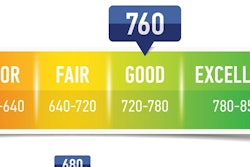
To listen to the associated podcast, please click here!
Part 1 overviewed the documents you should receive monthly, whether provided by an accountant or software package. Part 2 focused on staying profitable. This article starts at the strategic level on the types of accounting and considerations for invoicing, then moves on to how to make them work for you.
Accounting
There are two types of accounting—financial and managerial. Financial accounting is well-known to most business owners. It meets the requirements of investors, creditors and government taxing agencies. The standards for proper financial accounting in the United States are set by the Financial Accounting Standards Board (FASB). Financial accounting is a legal requirement and you must play by its rules.
Managerial accounting is not ruled by any standard, except common sense. There are several models employed, like activity-based costing (ABC) and are unique to each company. So what is it? It takes the same numbers used in financial accounting, and recasts them to track true costs by step, activity, product or service line, or customer. It provides you with the total cost of each step in a process.
You need to know this so you can answer the following questions:
- Who are your most profitable customers?
- What are your most profitable products (or services)?
- Are your products (or services) correctly priced?
You can only answer these questions if you have moved beyond having accountants produce reports. So here is what you need to do:
- Create a visual map of every major process—both internal and external.
- Look for economies, improvements and reductions in steps in every process, removing non-value-added activities, then update the map.
- Assign costs to each step, including fixed costs (like power, rent, office staff, etc.) and variable costs (materials, labor, equipment maintenance, etc.).
This process can give you an accurate picture of what a product costs to make or a service costs to deliver. Armed with that information, you can look at pricing and profitability, and make better business decisions using the same numbers as the financial approach. You’re just reorganizing and using them in ways to help real-time decision-making.
Invoicing
There are two things to consider: First is accuracy and second is marketing. Use the information from ABC to produce an internal invoice for accuracy. Every cost associated with this customer is contained in the document. This is the source for the invoice the client receives. Assuming you are not doing this by hand and it is produced by your accounting program, double-check each item to ensure all hidden costs are included. If you use this approach, you will never miss another charge.
Moving on to marketing, the invoice is one of the most opened and reviewed pieces of marketing collateral the customer receives. It is an opportunity to include (email) or enclose (mail) new ways for the customer to understand and interact with you.
Consider the following as a checklist:
- Always include a date.
- Always address the invoice directly to the person who ordered your service.
- Always include an invoice or reference number.
- Always ensure each line item has a clear description and embed the hidden costs where appropriate.
- Always include the due date and payment terms by the invoice total.
- Always include payment options by the invoice total.
- Always include a statement about your company’s commitment to customer service and how much you appreciate a customer’s business.
- Always require a read receipt if the invoice is emailed.
- Always follow up on the invoice prior to its due date with a call to ensure the customer understands everything.
- Always respond with a thank-you note (email or mail) after payment is received.




















